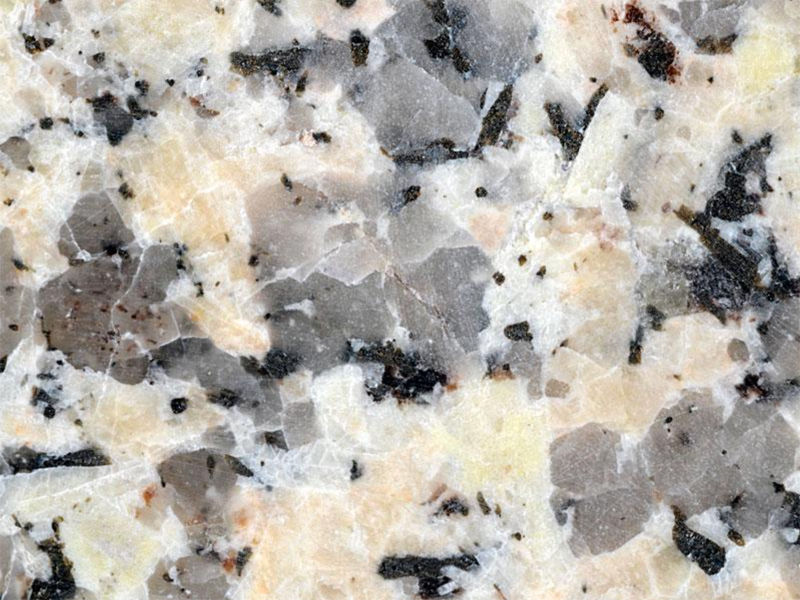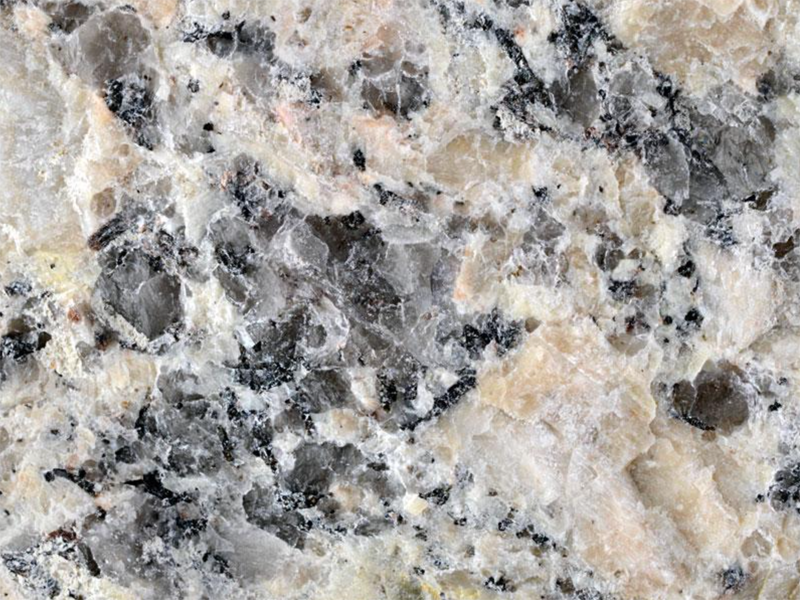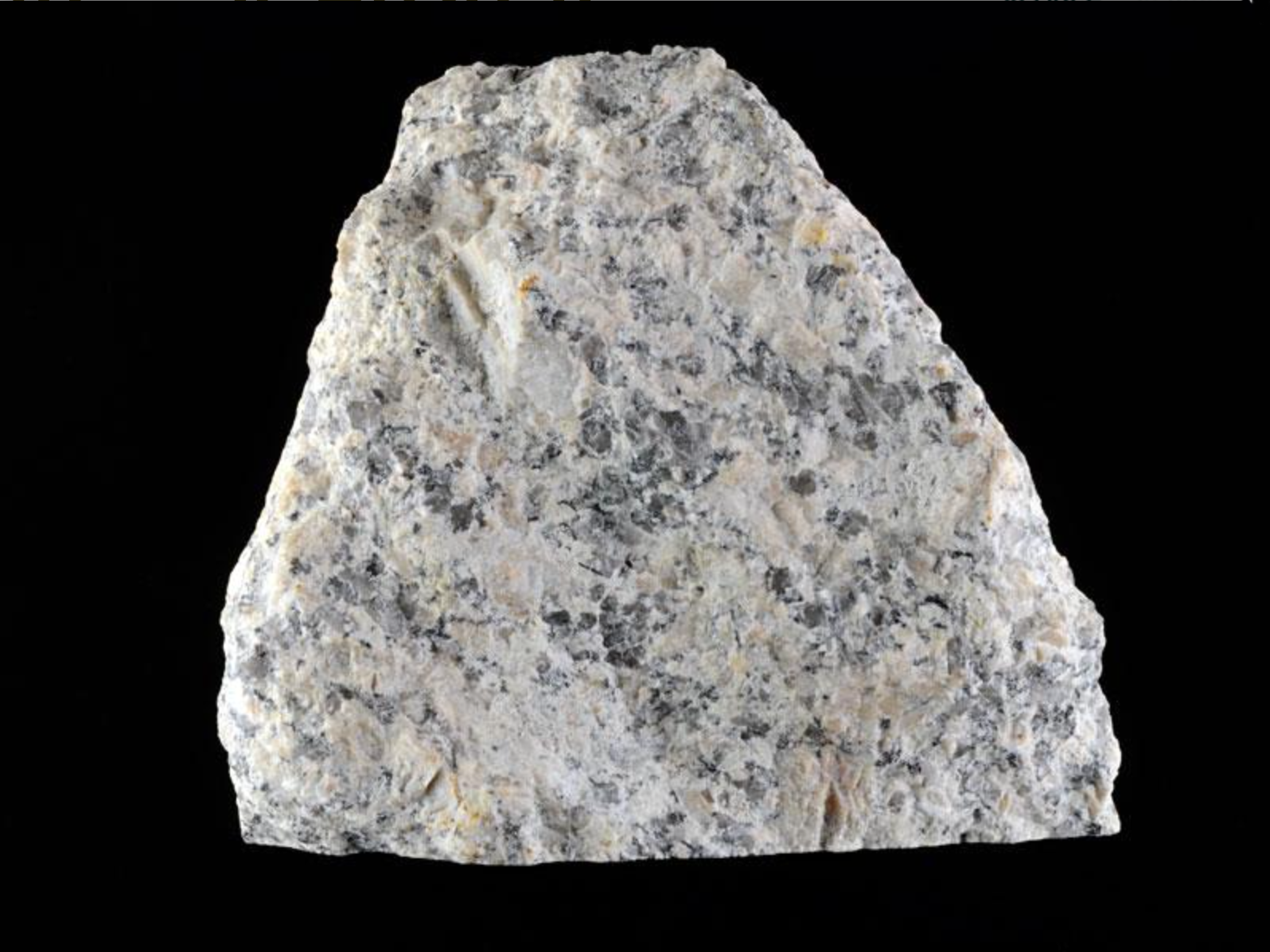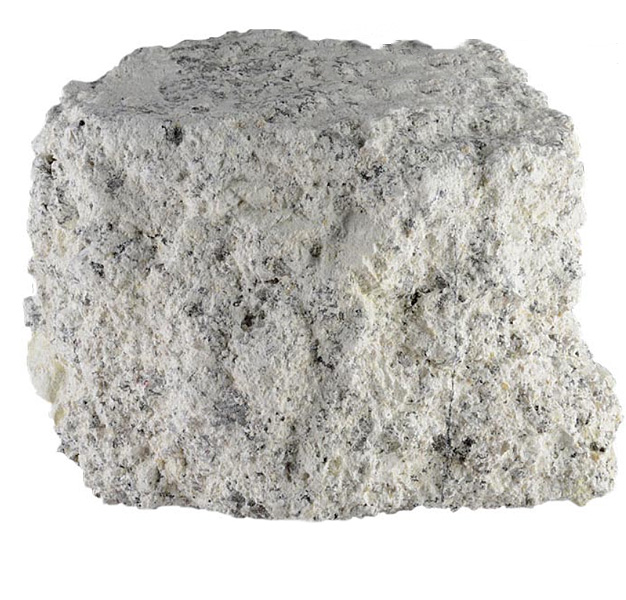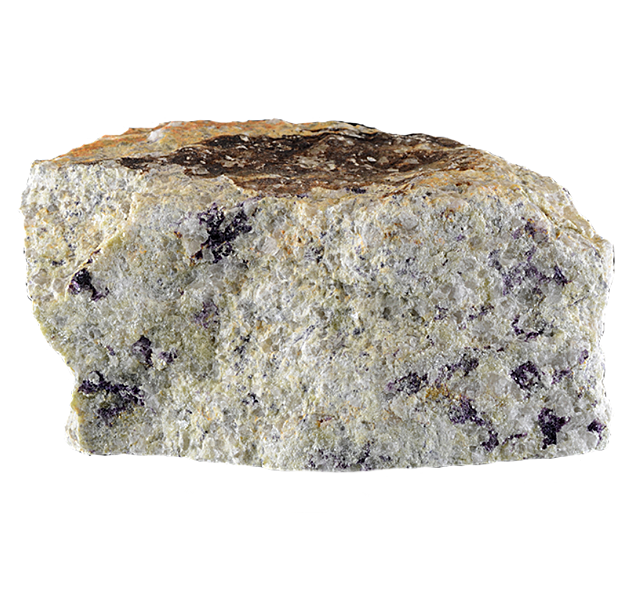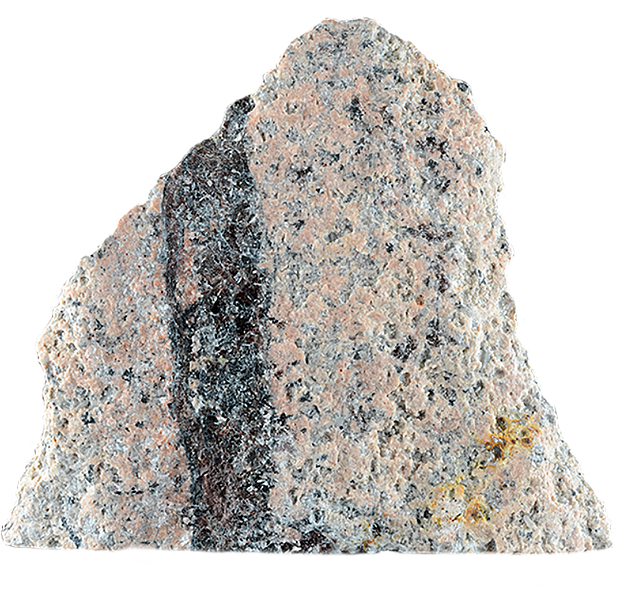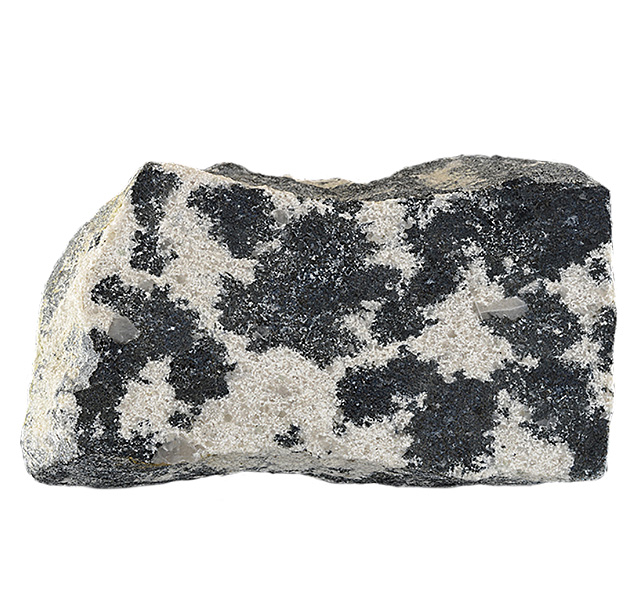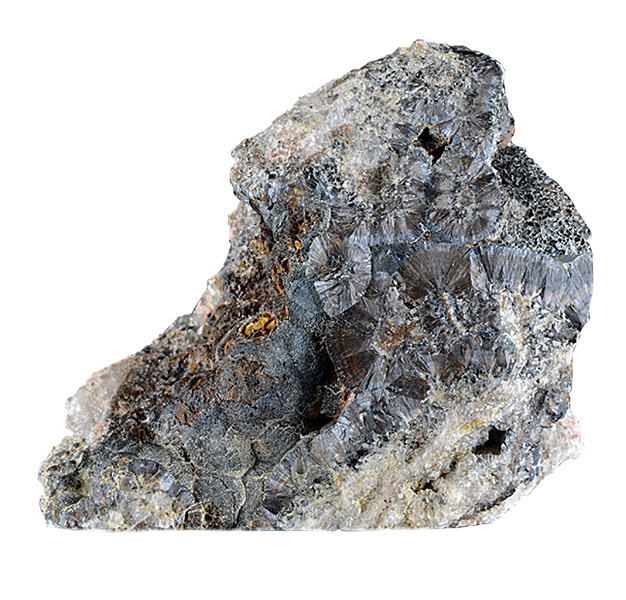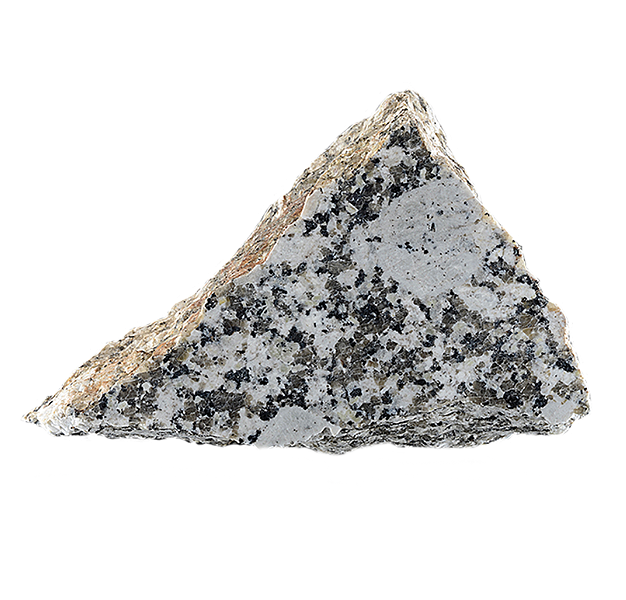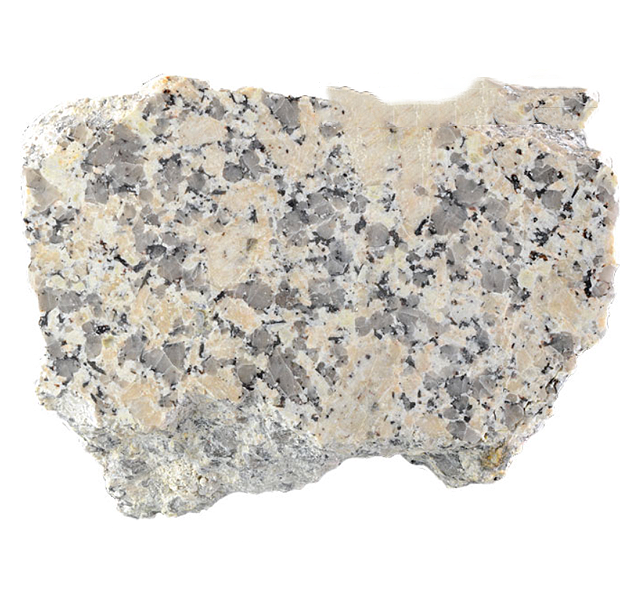
Fact sheet
This porphyritic granite comes from a location within Littlejohns china clay pit to the north of St Austell. Despite being collected in a working pit, this sample is relatively unaltered with only minor sericitisation of plagioclase feldspar noticeable in thin section. Tourmaline is the main mafic species and Li-mica is also present.
Littlejohns pit has been active since the 1800s and continues to supply fine clays suitable for use in paper making. Clay is mined in this area using high pressure water hoses (called monitors) and the resulting slurry is filtering to remove the remaining mica, feldspar and quartz.
A case study of the St Austell granite complex in Cornwall, England, illustrating the range of rocks associated with a granite intrusion. The earliest part of the complex is a siderophyllite (biotite) granite containing muscovite and tourmaline typical of a SW England granite, with many primary magmatic features.
This early intrusion was followed by the intrusion of an evolved volatile-rich magma which was the driving force behind a series of intense hydrothermal processes as volatiles escaped from this magma and helped to establish an extensive alteration halo (aureole). Boron, fluorine and lithium (as well as water) played major roles in the formation of the second intrusion and in the associated hydrothermal processes. Igneous activity lasted around 18 million years from 282 Ma (siderophyllite granite) to 265 Ma (fluorite granite).
